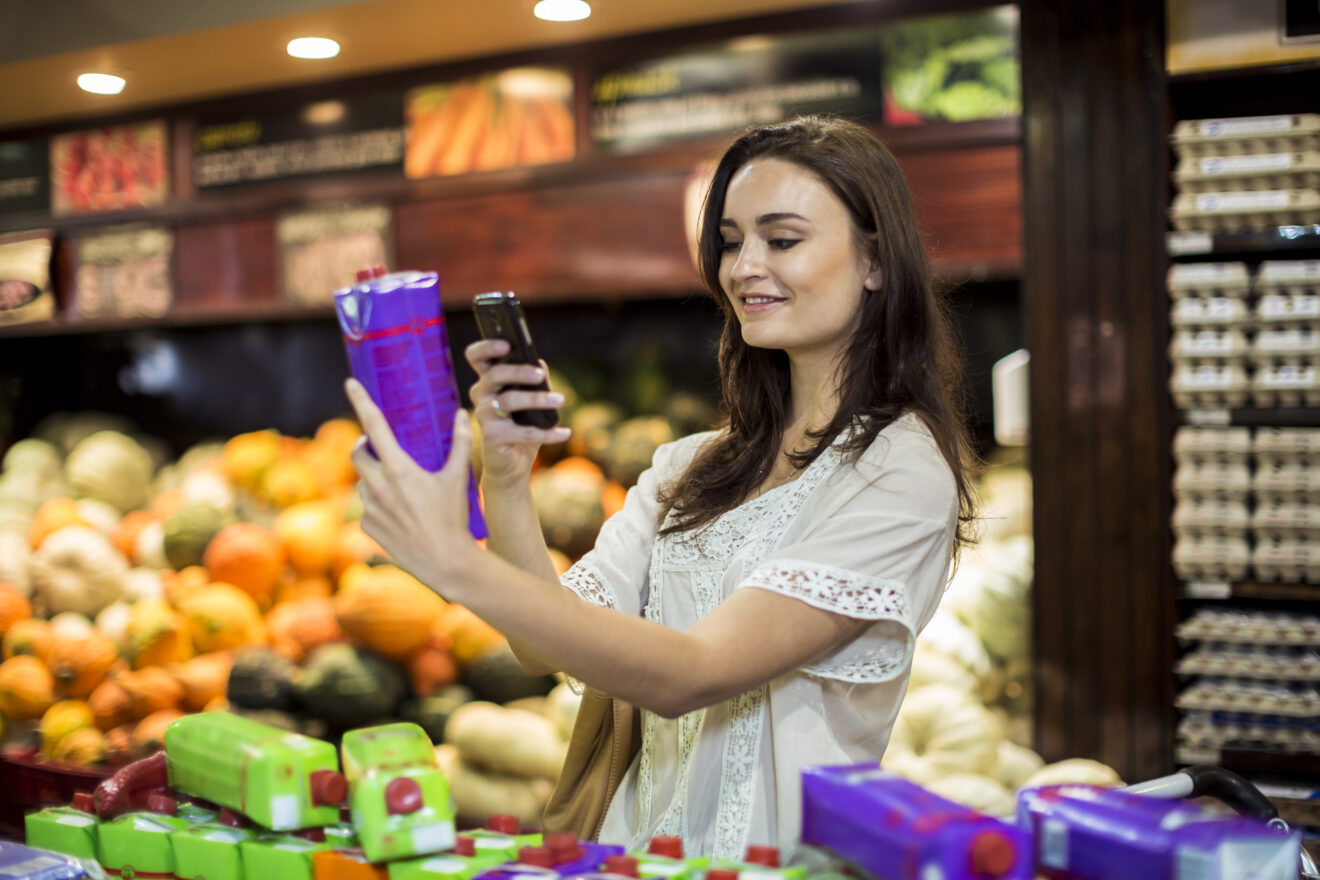Consumers are increasingly using grocery technology as part of their grocery shopping experience, with a third of shoppers ordering groceries online at least once a week and 57% using digital tools to plan their grocery trips, according to new research from Acosta. However, according to the group’s “Grocery Shopping and Technology: The Shopper Perspective” study released this week, there is still much room for improvement when it comes to technology engagement with shoppers and a wide gap between age groups utilizing the technology on a regular basis. For example, 63% of shoppers use an app to assist with in-store shopping but that number jumps to 89% when it comes to Gen Zers. While this gap represents an ongoing challenge for grocers, it also highlights a great opportunity for them, as well, said Kathy Risch, Acosta Group’s senior vice president of shopper insights and thought leadership.
Opportunity abounds
“People are creatures of habit, but older shoppers are willing to learn, it just needs to be easy – and retailers can help with the transition,” Risch said. “Stop & Shop, for instance, is testing in-store kiosks for ‘digitally hesitant’ shoppers, by allowing them to activate and load digital coupons right in the store, print new offers, access recipes and more. And last year, Kroger made some changes to help shoppers who were having trouble using apps in-store and were missing out on digital offers. Now these shoppers can clip coupons online before their trip, which go directly onto their loyalty card – a much better process for those who struggled getting the coupons from their phone.”
Acosta also found that both Millenials and households with kids are most interested and comfortable in utilizing technology, more so than urban dwellers and higher-income shoppers without kids.
“But it does vary a bit depending on the technology,” Risch explained, “so the nuances are important to watch and consider. So yes, it’s further proof of future adoption but there are nuances. Millennials were really the first generation to grow up with iPhones and other technologies, and they are now most likely to be in the child-rearing years. Since they had phones growing up, their kids will too – and they will certainly know how to use them more efficiently than other generations. Along with Gen Z, they will typically be the first adopters of the latest tech – whether at home, at the workplace or at the grocery store.”
In-store still reigns supreme
Despite the rise of online shopping, 56% of shoppers indicate they still prefer to shop in store, the survey found.
“Our research indicates that two out of three of shoppers actually enjoy shopping for groceries, and the overall store experience is part of the reason,” Risch said. “Grocers have been amplifying the experience for years with things like coffee shops, food sampling and added services (like banking) – and more recently they are replicating the restaurant experience with greatly enhanced prepared food offerings that create a real win-win for both the retailer and the shopper.”
Technology, though, will continue to play a role “by simply making the trip faster and more efficient with Smart Carts, apps, frictionless checkout and more,” Risch said.
Carts will continue to get smarter
One grocery technology we can expect to see more of this year? Smart carts, Risch said.
“With so many major chains turning to smart carts – including Kroger, Albertsons, Wegmans, Schnucks, Whole Foods, Dollar General – we think that growth of this technology will ramp up quickly. AI-powered smart carts will allow shoppers to completely bypass checkout lines, greatly improving the shopping experience and reducing one of the biggest pain points for shoppers,” Risch said. “According to Grocery Doppio, the smart shopping cart market is experiencing remarkable growth, projected to reach a value of $1.76 billion in 2023. With a projected compound annual growth rate of 27.48%, the market is expected to reach an impressive $9.74 billion by 2030.”
Other AI applications are likely to grow as well, Risch said, including personalized recommendations and behind-the-scenes supply chain tech related to forecasting, order replenishment, production planning and inventory management.
Other facts from Acosta’s “Grocery Shopping & Technology: The Shopper Perspective” study:
- Just as many prefer to order on a phone vs a laptop (34%)
- 15% say they have used a smart shopping cart
- 4-in-10 have scanned a QR code on a product to get more information
- 33% of food samplers have tried one from a vending machine
- Self-checkout is just as popular as staffed checkout, and 20% have used a retail app to checkout
Recent related stories:
- How grocery retailers are expanding from food retailers to one-stop shop destinations
- Q&A: How the grocery store is evolving to meet consumer health needs
- FMI’s pitch contest propels technology in the grocery industry
_____________________________________
If you liked this article, sign up to receive one of SmartBrief’s Food & Beverage newsletters. They are among SmartBrief’s more than 250 industry-focused newsletters.
